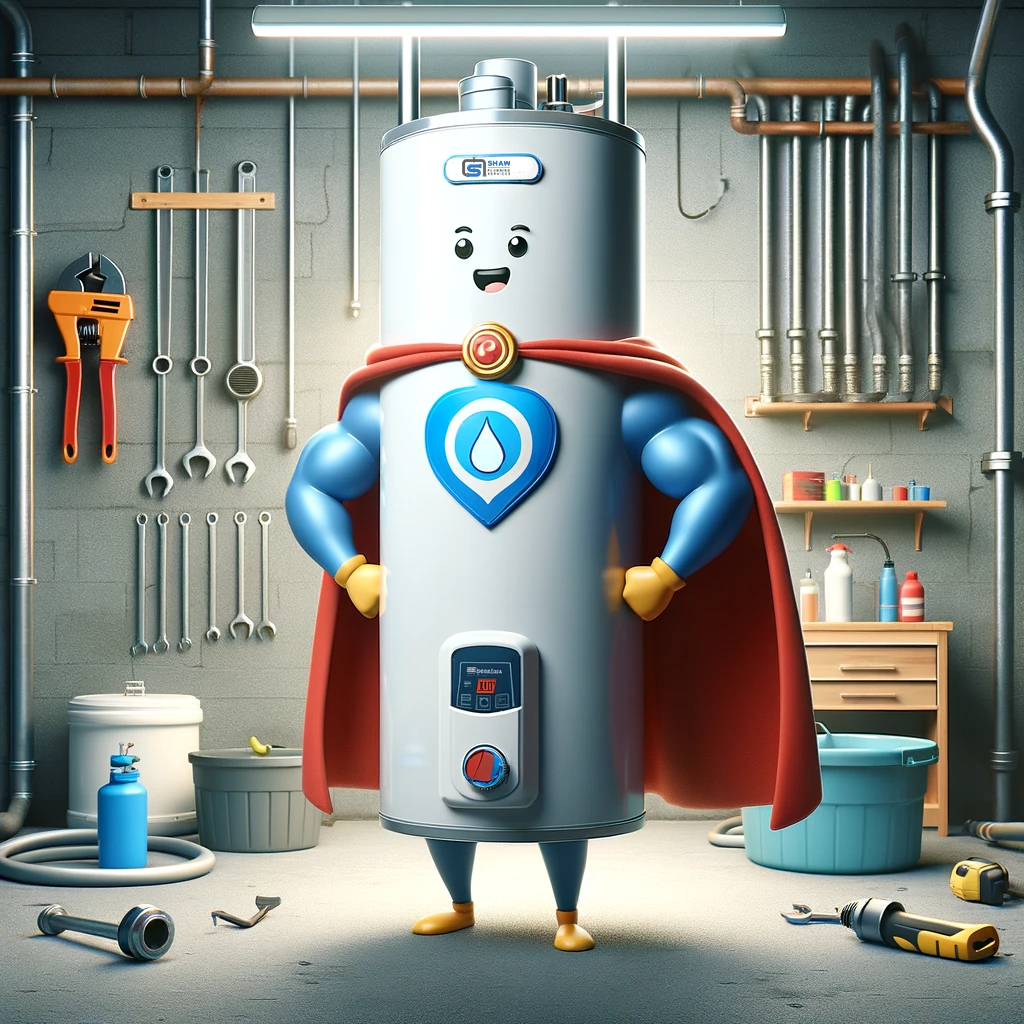
The Water Heater
Imagine a world without the comfort of a hot shower or the convenience of warm water at the turn of a tap. Tough, right? This everyday luxury is brought to our homes by a humble yet essential appliance: the water heater. Whether it’s gas or electric, understanding how these devices work can be both enlightening and practical.
Understanding Gas Water Heaters
The gas water heater is like a culinary maestro, cooking up hot water instead of gourmet meals. It uses natural gas or propane as fuel, which ignites in a burner under the tank. A heat exchanger transfers the heat to the water, efficiently warming it up. It’s equipped with a thermostat to regulate temperature, ensuring you don’t get that unexpected icy shock during your morning shower. Safety is paramount, so it boasts venting systems and pressure relief valves, like a vigilant guard keeping watch over your comfort and safety.
Unique Gas Water Heater Components:
- Gas Burner and Control Valve: The heart of the gas water heater. The burner, ignited by the pilot light, is regulated by the control valve, which determines the gas flow and, consequently, the heat produced.
- Pilot Light and Thermocouple: The pilot light is a small, constantly burning flame that ignites the gas burner. The thermocouple is a safety device that detects whether the pilot light is on, cutting off the gas supply if the flame goes out to prevent leaks.
- Venting System: Essential for safety, the venting system expels combustion gases from the gas burner outside, preventing dangerous build-up inside.
Diving into Electric Water Heaters
In the corner of electric appliances, we have the electric water heater, operating without the dramatic flair of burning fuel. It uses one or two heating elements to heat the water – think of them as submersible tea kettles, minus the whistle. These elements are controlled by thermostats to maintain your desired temperature. While they’re typically more energy-efficient than their gas counterparts, they may take a bit longer to heat up the water – a classic tale of the tortoise and the hare.
Unique Electric Water Heater Components:
- Heating Elements: Electric water heaters use one or two elements submerged in the water tank to heat the water. These elements work like big immersion heaters.
- Thermostats: Each heating element is regulated by its thermostat, which monitors the water temperature and turns the elements on and off to maintain the set temperature.
- Electrical Wiring and Circuitry: This includes all the electrical components and wiring that power the heating elements and control the thermostats.
Common Ground: Shared Components
While gas and electric water heaters may have their own unique charm, they share some common components that are the unsung heroes of hot water delivery. Picture the tank, a cylindrical vessel, like a metal fortress holding the heated water. The dip tube ushers cold water into the tank’s realm, while the hot water rises to the top, ready to be dispatched through the heat-out pipe on your command. Then there’s the drain valve, akin to a castle’s secret passage, used for maintenance and cleaning. And let’s not forget about insulation ensuring that the heat stays where it’s needed.
Shared Components Across Both Types:
- Tank: The storage area for hot water, typically made of steel and lined with a protective coating to prevent rust and corrosion.
- Sacrificial Anode Rod: This rod, made of magnesium or aluminum, helps prevent corrosion of the tank by corroding itself – a process known as galvanic corrosion.
- Dip Tube: Where cold water enters the tank and is directed to the bottom to be heated.
- Heat-out Pipe: The pipe through which hot water exits the tank and travels to your faucets and appliances.
- Temperature and Pressure Relief Valve: A critical safety feature, this valve opens to release water (and thus lower the pressure) if either the temperature or pressure inside the tank gets too high.
- Drain Valve: Located at the bottom of the tank, used to empty the tank for maintenance or to remove sediment build-up.
- Insulation: Surrounding the tank, insulation helps retain heat, improving efficiency.
- Thermal Expansion Tank (optional): Some systems include this tank to absorb excess water pressure caused by thermal expansion as water heats.
Maintenance Tips
Maintaining your water heater is like taking care of a trusty steed; it ensures longevity and efficiency. Regular checks can prevent calamities of leaks or inefficiency. Draining the tank annually to remove sediment is akin to an internal spa for your heater, keeping it healthy and efficient. While some of us may fancy a bit of DIY, remember that tasks involving gas lines or complex electrical components are best left to the knights in shining armor – professional plumbers and technicians.
Environmental Considerations and Advances
“In our quest for greener pastures, modern water heaters have become champions of energy efficiency. Today’s models come with improved insulation, energy-saving modes, and even smart technology that teaches your hot water usage patterns, minimizing waste. The future holds exciting possibilities, like solar-powered water heaters and tankless designs that heat water on-demand. These advancements aren’t just good for your wallet; they’re a nod to our planet, reducing the carbon hoofprint one hot shower at a time.
It’s time to kick back, relax and take a load off thanks to your water heater.
From the fiery depths of gas burners to the silent, steadfast electric elements, water heaters are more than just metal tanks; they’re the heroes of our daily comfort. Understanding how they work not only satiates curiosity but also empowers us to make smarter, more eco-friendly choices. So, the next time you enjoy a hot shower, give a nod to the marvelous machine that made it possible. And remember, a well-maintained water heater isn’t just a boon for your home; it’s a testament to your savvy as a homeowner.
